A Salvaged Banksy Mural is Now on View in NYC
This unique Banksy mural goes up for auction on May 21st in NYC!

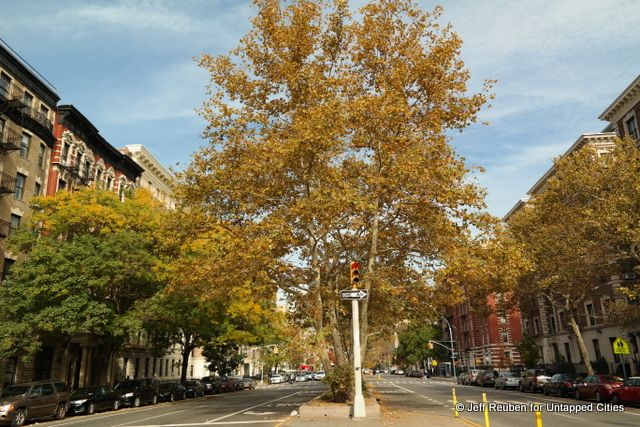
Adam Clayton Powell, Jr. Boulevard, looking north from 112th Street
Seventh Avenue in Harlem was officially renamed Adam Clayton Powell, Jr. Boulevard in 1974, though the old name is still widely used. In fact, this street has had an identity crisis ever since it was separated from the lower part of Seventh Avenue by the creation of Central Park in 1853.
In the 1811 Commissioners’ Plan, Seventh Avenue extended from Greenwich Village to 155th Street. With Central Park in place, the section above 110th Street was cut off from the lower part by 51 blocks.
In the 1860s the Central Park Commission enacted a widening of Seventh Avenue north of the park from 100 feet to 150 feet. The Central Park Commission referred to the widened right-of-way as “Seventh Avenue Boulevard” in its reports, though the City did not formally change Seventh Avenue’s name.
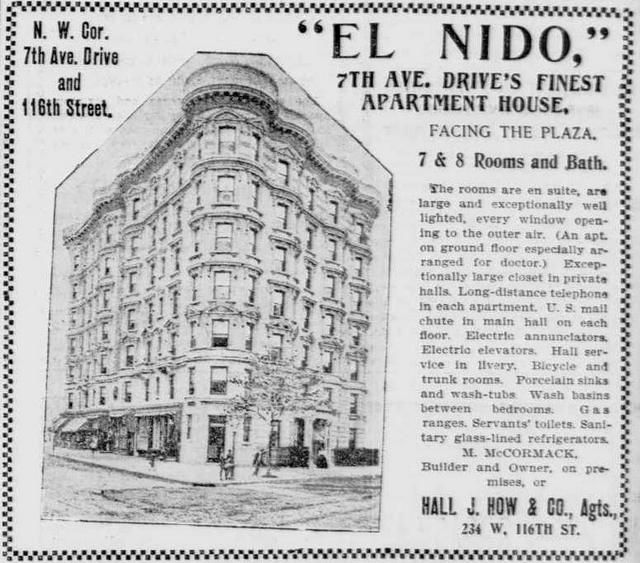
“7th Ave. Drive” ad, NY Daily Tribune, 30 September 1900. Via Library of Congress, Chronicling America
Although unofficial, as apartment houses were built along upper Seventh Avenue in the late 1800s and early 1900s, the names Seventh Avenue Boulevard or Seventh Avenue Drive were often used in real estate ads to distinguish it from the more commercial character of Seventh Avenue south of the park.
Similarly, in the early 1900s the City considered several proposals to rename upper Seventh Avenue. Suggested names included Theodore Roosevelt Drive, McKinley Drive, Andrew H. Green Drive (for the “Father of Greater New York” and chairman of the Central Park Commission), and, most simply, “The Drive.”
In addition, in 1907 a City-appointed Improvement Commission recommended designating Seventh Avenue as a parkway that would link Central Park to the Bronx via a bridge as part of a larger parkway network.
Following all these efforts, in 1909 the Board of Aldermen approved a law changing the name of upper Seventh Avenue to Jefferson Parkway.
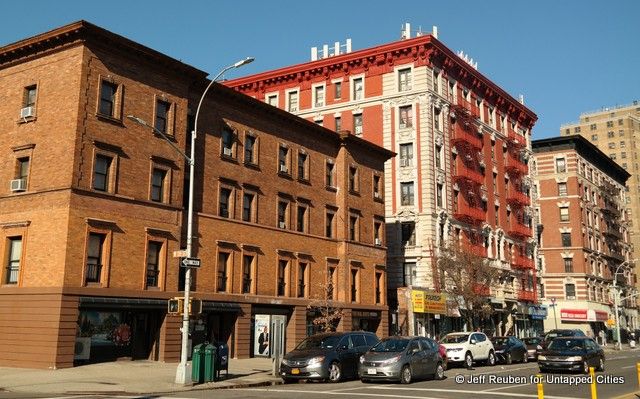
Looking north from 139th Street, Strivers Row buildings in the foreground
However the Jefferson Parkway renaming was vetoed by Mayor George B. McClellan, Jr. The mayor noted that commercial interests had vigorously opposed the change, as city laws prohibited the operation of business wagons on parkways past noon.
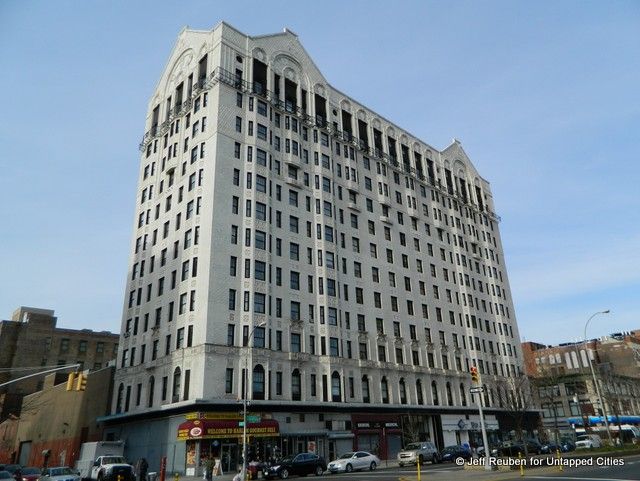
Hotel Theresa
In the years that followed the 1909 veto, parts of upper Seventh Avenue saw the development of major commercial uses, including the Lafayette Theater at 132nd Street in 1912, the Hotel Theresa at 125th Street in 1913, and the Renaissance Theater and Casino at 137th Street in 1922-1923.
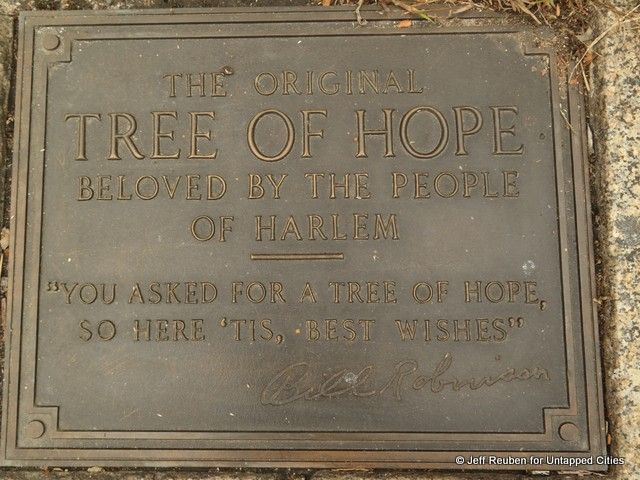
During the Harlem Renaissance of the 1920s and 30s, Seventh Avenue was nicknamed the “Boulevard of Dreams” as it became a center of a vibrant nightlife scene. A symbol of this era was the “Tree of Hope,” an Elm located along Seventh Avenue north of 131st Street, which theater performers touched for good luck.

“Tree of Hope III”; The Lafayette in background, new building on site of Lafayette Theatre
But with Seventh Avenue being a commercial thoroughfare and not a parkway, the roadway was widened in 1934 and the Tree of Hope had to be removed. The tree’s stump is now inside the Apollo Theater where it continues to serve the same function. A replacement tree (no longer existing) was planted by Bill “Bojangles” Robinson and a sculpture called “Tree of Hope III” now stands in the median near the site of the original tree.

Adam Clayton Powell, Jr. Statue at Adam Clayton Powell, Jr. Boulevard. & 125th Street
In 1974, in an era when many Harlem place names were changed to honor prominent African-Americans, the city renamed upper Seventh Avenue in honor of Adam Clayton Powell Jr. Powell served for decades as both minister of Abyssinian Baptist Church and congressman for Harlem.

7th Ave. Deli on Adam Clayton Powell, Jr. Boulevard
Considering the many efforts to rename upper Seventh Avenue over the years, it is ironic that four decades after the name Seventh Avenue was officially eliminated in Harlem it is still used by many buildings, residents, and businesses along the street.
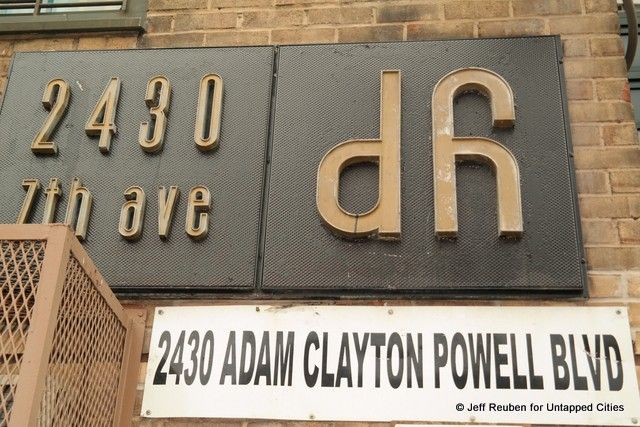
Next, read about the history of St. Nicholas Avenue and Strivers Row. Get in touch with the author @Jeff_Reuben
Subscribe to our newsletter